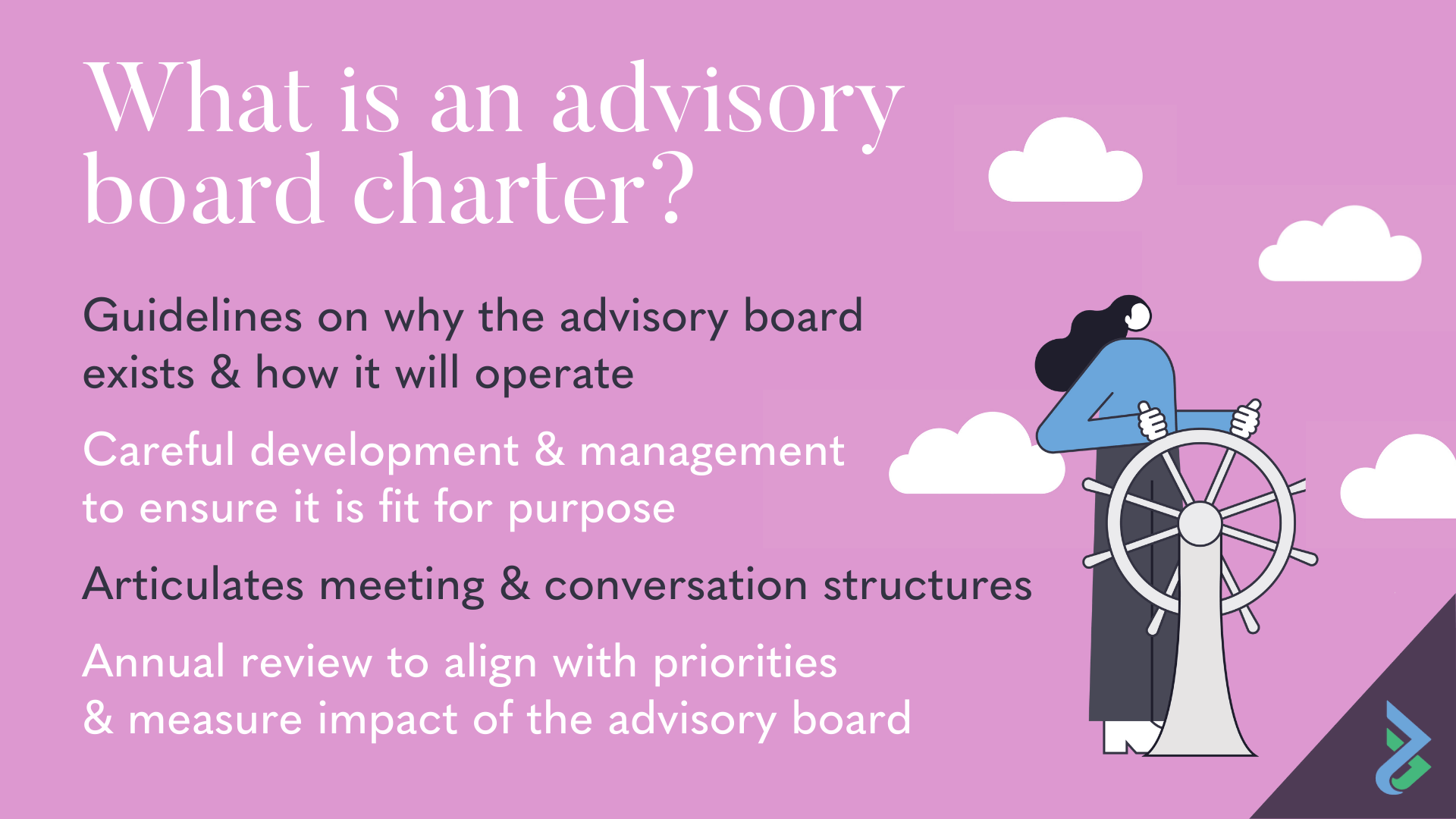
What is an Advisory Board Charter?
Fundamentals
Published 24 May 2019
A charter is a guideline on why the advisory board exists and how it will operate.
An effective advisory board requires a written charter. Due to the flexible nature of advisory boards, the charter requires careful development and management to ensure it is “fit for purpose” and does not create issues for external advisors in providing binding advice or “shadow directorship”.
Best practice standards include several elements on how it is established, how it is referenced and when it is reviewed.
Clearly articulating upfront meeting and conversation structures are important as management, executives, advisory boards and governance boards all host different discussions. When these discussions are not clearly defined is when role and decision-making confusions often occur.
During the establishment phase of a charter best practice is to schedule an annual review against the priorities and measurement of the impact of the advisory board. A process managed by a Chair, ensures the advisory board stays relevant, the agenda is staying aligned and on track with the organisation and advisors are maintained or changed to ensure “fit for purpose”.
The Advisory Board Centre provides membership, certification and best practice training for board chairs and advisors. When you are engaging strategic advisors in your business, look out for the Certified Chair™ or Approved Advisor logos.





